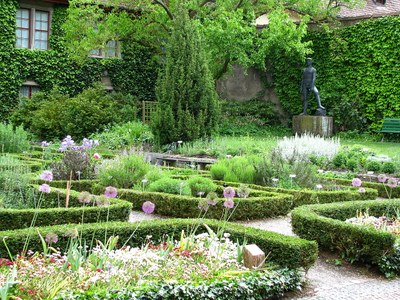Kloster Allerheiligen, Schaffhausen: Reconstruction of a medieval herb garden

In the Middle Ages, the monastery garden served primarily as a kitchen garden. Here, not only were vegetable beds cultivated for daily sustenance, but also herbs and medicinal plants were cultivated for medical purposes. Ancient works on plants and medicine and oral testimonies provided the necessary basic knowledge upon which monasteries could gradually build. Eventually, they produced their own treatises. By exchanging expertise, seeds, and plants, monasteries created a botanical network that also helped to disseminate and cultivate Mediterranean and oriental plants in Central Europe. The species were systematically recorded and described. This makes the monastery gardens appear as precursors of the botanical gardens, which originated from the 16th century in the medical setting of the universities. Today's monastery gardens (see image) are reconstructions of medieval grounds, as here in the former Kloster Allerheiligen in Schaffhausen.
Kloster Allerheiligen in Schaffhausen (Switzerland), color photography, 2009, photographer: Roland zh; source: Wikimedia Commons,  Creative Commons License Attribution - Distribution under equal terms 3.0 not ported.
Creative Commons License Attribution - Distribution under equal terms 3.0 not ported.